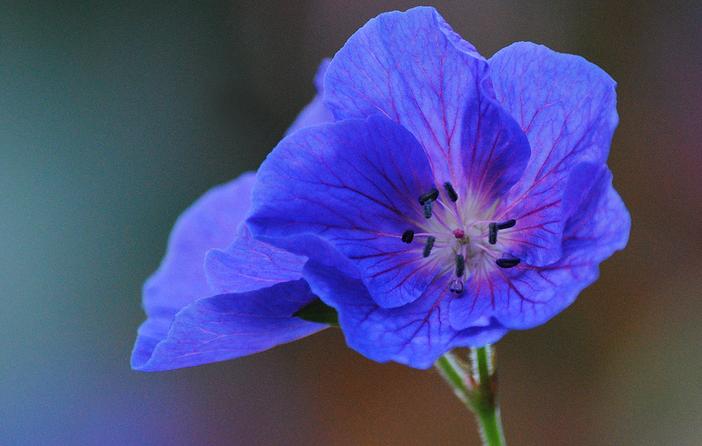Himalayan Crane’s-Bill
(Geranium himalayense)
Himalayan Crane’s-Bill (Geranium himalayense)
/
/

Mark
CC BY 2.0
Image By:
Mark
Recorded By:
Copyright:
CC BY 2.0
Copyright Notice:
Photo by: Mark | License Type: CC BY 2.0 | License URL: https://creativecommons.org/licenses/by/2.0/ | Uploader: Mark Wordy | Publisher: Flickr
























Estimated Native Range
Summary
Geranium himalayense, commonly known as Himalayan Crane’s-Bill, is a deciduous perennial herb native to the alpine zones and meadows of the Himalayas, as well as temperate regions of Central Asia. It typically grows to a height of 0.8-2 feet (0.2-0.6 meters) and a width of 1-2 feet (0.3-0.6 meters), with a mounding habit that can create a lush ground cover. The plant is characterized by deeply lobed leaves and bears showy flowers that are most commonly blue or purple, with some varieties offering white blooms. These flowers appear in early to mid-summer and can be quite eye-catching.
Himalayan Crane’s-Bill is valued for its vibrant summer flowers and its ability to fill in garden spaces as a ground cover. It is often used in rock gardens, borders, and cottage gardens. This geranium prefers consistently moist soil but is relatively drought-tolerant once established. It thrives in full sun to part shade and requires well-drained soil. While generally easy to maintain, it can suffer from issues such as rust or leaf spot diseases. Deadheading spent flowers can encourage a second bloom. It is also known for its ability to attract pollinators like bees and butterflies to the garden.CC BY-SA 4.0
Himalayan Crane’s-Bill is valued for its vibrant summer flowers and its ability to fill in garden spaces as a ground cover. It is often used in rock gardens, borders, and cottage gardens. This geranium prefers consistently moist soil but is relatively drought-tolerant once established. It thrives in full sun to part shade and requires well-drained soil. While generally easy to maintain, it can suffer from issues such as rust or leaf spot diseases. Deadheading spent flowers can encourage a second bloom. It is also known for its ability to attract pollinators like bees and butterflies to the garden.CC BY-SA 4.0
Plant Description
- Plant Type: Herb
- Height: 0.8-1.5 feet
- Width: 1-2 feet
- Growth Rate: Moderate
- Flower Color: Blue, Purple, White
- Flowering Season: Summer
- Leaf Retention: Deciduous
Growth Requirements
- Sun: Full Sun, Part Shade
- Water: Medium
- Drainage: Medium
Common Uses
Bee Garden, Bird Garden, Butterfly Garden, Deer Resistant, Groundcover, Low Maintenance, Rabbit Resistant, Showy Flowers, Street Planting
Natural Habitat
Native to alpine zones and meadows of the Himalayas and temperate regions of Central Asia
Other Names
Common Names: Lilac Cranesbill, Praktnäva
Scientific Names: , Geranium himalayense, Geranium meeboldii, Geranium exul, Geranium ferganense, Geranium candidum, Geranium collinum f. intermedia, Geranium collinum var. candidum,
GBIF Accepted Name: Geranium himalayense Klotzsch